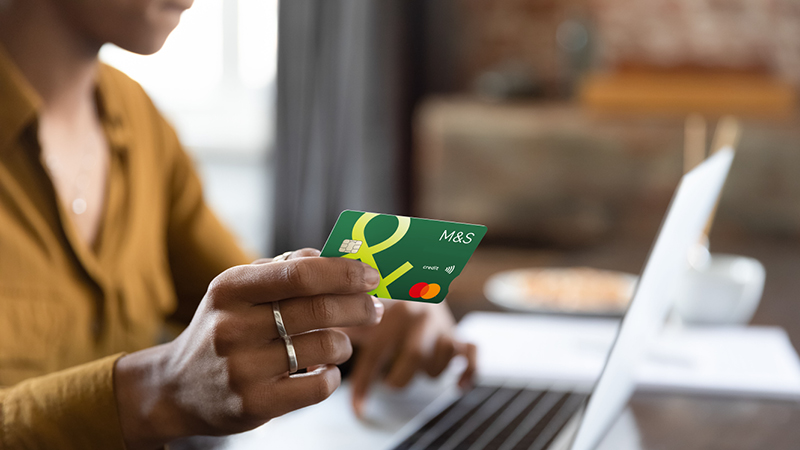What is a credit card?
Put simply, credit is when you borrow a sum of money that you must pay back at a later date.
Credit cards can give you the flexibility to cover surprise costs that come your way – such as plumbing problems or car repairs – should the unexpected happen. Or, you can use a credit card to treat yourself to that special something you've had your eye on.
However you use it, when used responsibly a credit card allows you to spread the cost of your purchases over time, making flexible and convenient repayments based on the amount you choose to repay each month (as long as it's at least your minimum monthly payment).
Credit cards explained
Once you take out a credit card, you can start to make purchases within your agreed credit limit. Then, you need to make regular payments (or one larger payment) to pay off the balance.
So what makes a credit card different to a loan? Besides varying levels of interest, fees and rewards, each type of borrowing is structured a little differently.
A credit card is a form of revolving credit, which means you can borrow money up to the amount of your credit limit, repay some (or all) of the balance, then borrow again if you wish. You'll normally pay interest on each transaction from the date it's added to your account, until it's repaid.
A personal loan is a little more structured. You'll usually borrow a lump sum, then repay it in equal instalments over a set period of time – with interest added to your repayments.
What is APR on credit cards?
APR stands for annual percentage rate. This is the standard way of showing the cost of borrowing over a year, taking into account the interest that's applied to the money you borrow with your credit card that you'll pay back on top of your balance over the course of the year and any other charges you have to pay for having the card (such as an annual fee).
It's a legal requirement for the APR to be shown on credit cards and loans, so you shouldn't get any unpleasant surprises. But it's important to keep in mind that not everyone will receive the representative APR, which is the APR the provider expects at least 51% of applicants successfully applying for the product as a result of the promotion showing the representative rate to be offered. You'll find out the exact APR you'll pay if your application is approved.
How is your credit card minimum payment calculated?
A minimum payment is the smallest amount of your total credit card balance that you need to repay each month. With a credit card from M&S Bank, we'll send you a statement each month showing the minimum payment for that month.
Your minimum payment will be whichever of the following amounts is higher:
A. The sum of – interest for the period from the last statement, any default charges, and 1% of the full amount you owe as shown on your monthly statement (not including interest and default charges).
B. 2.5% of the full amount you owe as shown on your monthly statement (including interest and charges).
C. £5.
For example, if the amount you owe is £450 including £15 interest and £12 charges then, using the information above:
A. Would be £31.23. The total would be the highest and would be your minimum payment. Split out according to the above this is – £15 interest, £12 charges and £4.23 (1% of the amount you owe) = £31.23.
B. Would be £11.25 (2.5% of £450).
C. £5, or if you owe less than £5 you must pay the full amount you owe (e.g. if you owe £2.50 that will be the minimum payment).
For more information on your minimum payment and how it's calculated, please check the terms of your Credit Card agreement.
For Credit Card agreements made before 23 March 2011, your minimum payment will be 2.5% of the balance, or £5 per month – whichever is higher.
You can make your minimum payment in the app, using Internet Banking, via our automated phone service or via Direct Debit - however you find easiest. It's always best to pay more than the minimum payment where you can - if you only ever make the minimum payment, it'll take you longer to clear your balance and may cost you more in interest. Paying your balance off in full each month may mean that you don't pay any interest.
To learn more about the number of ways you can pay your M&S Credit Card, visit ways to pay to find out more.
How can I get a credit card?
If you've not had a credit card before, the idea of setting one up might seem complicated but the process is actually quite straightforward. First, you'll need to provide some basic information to check you're eligible. Our online eligibility checker will give you an idea of whether you'll be accepted for an M&S Credit Card, without affecting your credit score.
Interested in applying for a credit card? You can find out more about the credit cards we offer by visiting our credit card offers page.
Advantages of a credit card
Unsure whether a credit card is for you? Using a credit card can allow you to:
What’s a representative example?
When you see representative example on our credit card offers, it will give you an understanding of how much it can cost if you borrowed £1,200 in one year.
This is what a representative example looks like:
Representative example
24.9% Purchase rate p.a. (variable)
24.9% Representative (variable)
£1,200 Assumed credit limit




